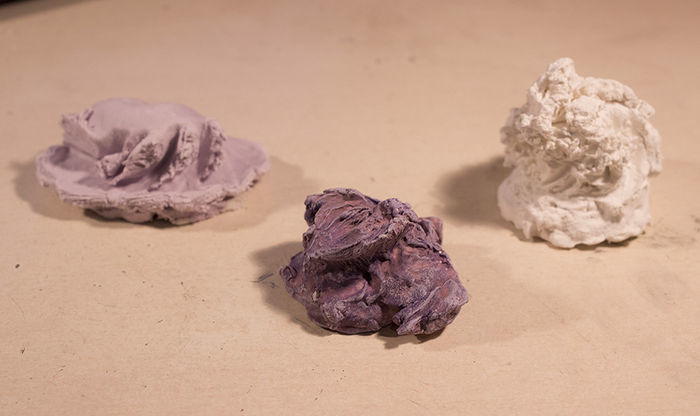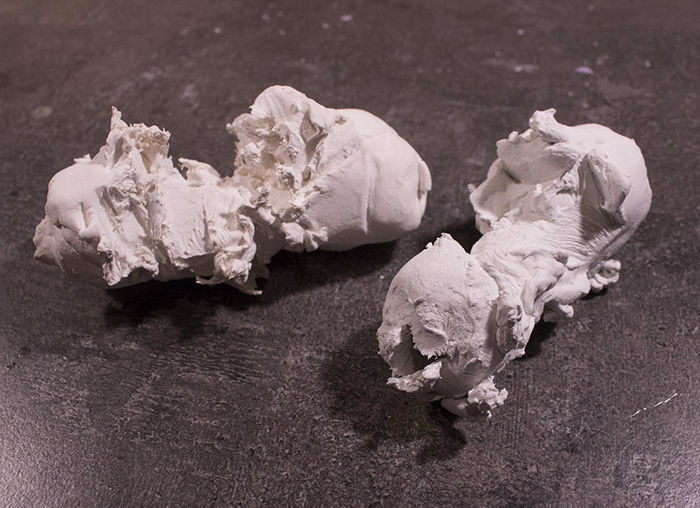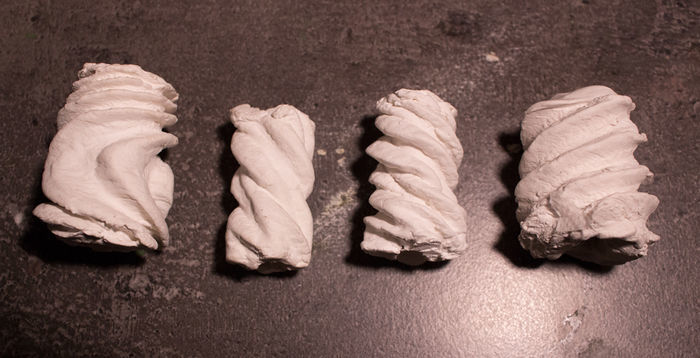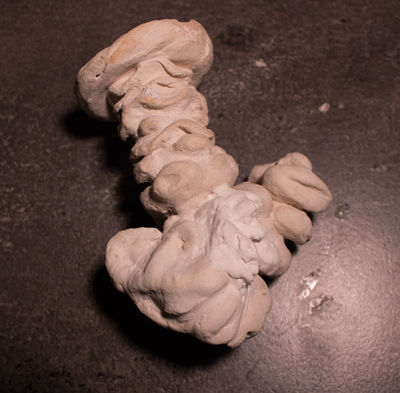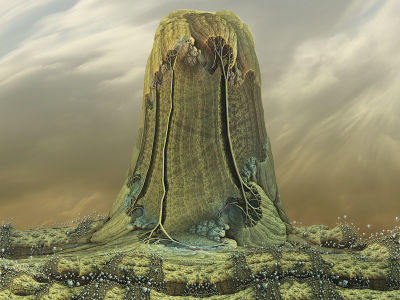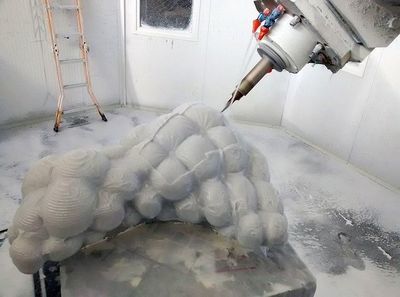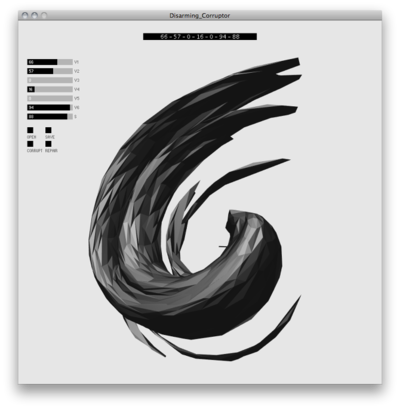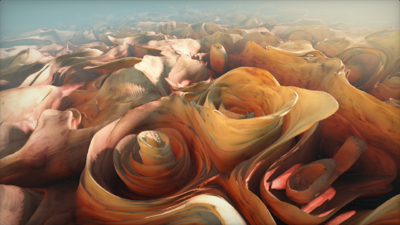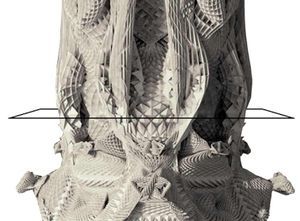User:TimDemper/Tools of the trade
Contents
Tools of the trade
I want to create a tool where I can generate actual physical objects with. The tool could be very simple (at first). For example: A sculpting tool rotating in a certain pattern. You can hold It with a piece of clay to generate a certain structure. Or materials that generate a structure of it’s own (for example pu foam or hot glue). Or something generated in software and 3d printed (probably don’t want to do that). And many more ways to generate physical object I could do research on. It’s probably the most interesting to use combination of a few ways to generate objects. For example: droppings drops of purr foam on an object, in kind of cnc machine, the pattern could be generated by software. The data of the generated object could be a mathematical algorithm, maybe mixed with some randomness (code generated randomness or influenced by imperfections of the building process). Or data from sensor input.
I want to create generated art, because i'm interested in different realities. The endless possibilities of unknown realities that may or may not exists. Almost everything that exists can be calculated or modeled by mathematical formulas and rules. Some aren't discovered yet or are too complex for us. If I want to create a new kind of nature I can backwards reason by using different kind of formulas and rules, and creating a new world of those formulas or rules. By generating art by a specific set of rules there will arise new kinds of objects and structures, that are hard to imagine.
I already created some generated artwork, but want to develop this further and create tools that can help me generating artworks. I will experiment with both a software and hardware. A software only generated object (can be 2d, 3d, and possibly 3d printed) can be much more complex, and hasn't the limitations that the material you will make the object from has. The interesting part about generating the artworks with hardware is that you instantly have a physical object. Also the imperfections and structures of the material can make the objects more interesting. Or the special properties of certain materials. For example the expanding of foam, melting/collapsing of styrofoam.
experiments
First I wanted to experiment with a hardware solution for generating objects. It has 3 servo's controlled by a arduino and can create very primitive shapes. The objects where also very chaotic, because the clay crumbled a lot. These imperfections were a nice addition, since it gave them a more natural look, almost like weird shaped rocks. But the shapes weren't all that interesting but they might become more complex if I use more servo's different kinds of tools on them or a completely different approach. Looking at the machine and how the objects are made is a lot more interesting than the actual objects it creates. Especially if the tool becomes very complex and the servo's are painted. It will then be a (scale model) of a factory where new kinds of generated shapes are created.
A video of the first experiment:
I used a stepper motor and the servo from the previous experiment to create something closer to the idea I have for the final machine. There should be 2 different sculpting tools (I have to experiment what tools works best or give the most interesting results).
A video of the second experiment:
TODO: maybe use input data from a source to generate the object. The source could be for example from sensors of the room the machine is in, or user input. Or it could be data from the internet. processing power from pc, arduino due or raspberi pi for more complex formulas? (if needed)
first video sketch https://youtu.be/ptpMh06Affs
Tools of the trade
I want to create a tool where I can generate actual physical objects with. The tool could be very simple (at first). For example: A sculpting tool rotating in a certain pattern. You can hold It with a piece of clay to generate a certain structure. Or materials that generate a structure of it’s own (for example pu foam or hot glue). Or something generated in software and 3d printed (probably don’t want to do that). And many more ways to generate physical object I could do research on. It’s probably the most interesting to use combination of a few ways to generate objects. For example: droppings drops of purr foam on an object, in kind of cnc machine, the pattern could be generated by software. The data of the generated object could be a mathematical algorithm, maybe mixed with some randomness (code generated randomness or influenced by imperfections of the building process). Or data from sensor input.
I want to create generated art, because i'm interested in different realities. The endless possibilities of unknown realities that may or may not exists. Almost everything that exists can be calculated or modeled by mathematical formulas and rules. Some aren't discovered yet or are too complex for us. If I want to create a new kind of nature I can backwards reason by using different kind of formulas and rules, and creating a new world of those formulas or rules. By generating art by a specific set of rules there will arise new kinds of objects and structures, that are hard to imagine.
I already created some generated artwork, but want to develop this further and create tools that can help me generating artworks. I will experiment with both a software and hardware. A software only generated object (can be 2d, 3d, and possibly 3d printed) can be much more complex, and hasn't the limitations that the material you will make the object from has. The interesting part about generating the artworks with hardware is that you instantly have a physical object. Also the imperfections and structures of the material can make the objects more interesting. Or the special properties of certain materials. For example the expanding of foam, melting/collapsing of styrofoam.
experiments
First I wanted to experiment with a hardware solution for generating objects. It has 3 servo's controlled by a arduino and can create very primitive shapes. The objects where also very chaotic, because the clay crumbled a lot. These imperfections were a nice addition, since it gave them a more natural look, almost like weird shaped rocks. But the shapes weren't all that interesting but they might become more complex if I use more servo's different kinds of tools on them or a completely different approach. Looking at the machine and how the objects are made is a lot more interesting than the actual objects it creates. Especially if the tool becomes very complex and the servo's are painted. It will then be a (scale model) of a factory where new kinds of generated shapes are created.
A video of the first experiment:
I used a stepper motor and the servo from the previous experiment to create something closer to the idea I have for the final machine. There should be 2 different sculpting tools (I have to experiment what tools works best or give the most interesting results).
A video of the second experiment:
TODO: maybe use input data from a source to generate the object. The source could be for example from sensors of the room the machine is in, or user input. Or it could be data from the internet. processing power from pc, arduino due or raspberi pi for more complex formulas? (if needed)
first video sketch https://youtu.be/ptpMh06Affs
Research/inspiration
Alleen formules te nietszeggend? op andere manieren laten onstaan (meerdere objecten bij elkaar zetten en regels geven).
An alternative world or object can be created by using fractals. They are generated by using only a set of mathematical rules.
3d mandelbrot
3d landscape like fractal
fractals, how they where discorvered and how you can make very complex and esthatic shapes from simple rules. https://www.ted.com/talks/benoit_mandelbrot_fractals_the_art_of_roughness
I think fractals are interesting, because it creates an image of only a set of simple rules. The fractals can also be infinitely zoomed in and out, so you could say every variation of a fractal is it's own reality.
These are digitally generated using different algorithms, and digitally edited afterwards. Then they are fabricated with a 3d printer. It may be a good idea to edit the generated objects by hand or make them part of a bigger structure, as the clay material is easy to edit afterwards and you can get more interesting structures. By copying and getting inspired by the strucure of the generated object the object is still semi generated.
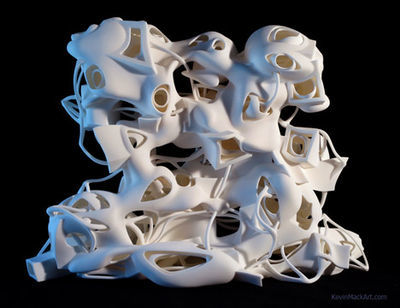
http://www.kevinmackart.com/sculpture.html
Objects generated using input data:
This is a milled out object generated from a painting of a sheep: i think especially the milling process is interesting in this artwork.
This program generates objects by modifying the vertexes of a 3d model. It also uses sliders to change parameters and generate an object of it.
Generated using a pixel shader: Pixel shaders can set the color value of every pixel individually. Because of this you can theoretically create any image or animation possible. You have to use mathematics and rules to make the images. I used pixel shaders for the height maps of my own machine.
https://www.ted.com/talks/michael_hansmeyer_building_unimaginable_shapes?language=en
Structures inspired by cell division. The pilars are made out of a primitive shape, that is folded a lot of times with differend folding ratios. Then it is sliced and fabricated from cardboard.
It's interesting how these simple rules can create very complex shapes, that are almost impossible to sculpt by hand, and almost unimaginable.
custom cnc machines:
https://www.youtube.com/watch?v=s_W0cPu5Gqs
https://www.youtube.com/watch?v=Z0vQIaUZGu4
custom 3d printer:
https://www.youtube.com/watch?v=snOErpOP5Xk
other:
Traveler(generated video):
http://notnot.home.xs4all.nl/ima/ima_youtube.html
Ima traveller (1996) is interactive computer software for exploring an infinite universe. It enables you to make a journey into a space that is being created in real time. This space develops in the direction you are moving into, so there is no end to it. You travel forward in a smooth motion, you can drift in all directions, but you can never go back to where you came from. You are zooming in on a surface of infinite size, never reaching any boundaries.
http://notnot.home.xs4all.nl/ima/IMAtraveller.html
Mathematics and art:
https://en.wikipedia.org/wiki/Mathematics_and_art
How artist have used mathematics in artwork, in the history and in the present day.
Superformula for making natural shapes:
https://en.wikipedia.org/wiki/Superformula
Haven't used it for now, but could be a very interesting addition to the model. Instead of only round particles i could use it to give every particle a different shape, and it could be a starting point to create organism and cells for future artworks.
nodebox program for generating art:
https://www.nodebox.net/code/index.php/Superfolia
Haven't created anything very interesting with it yet, but it seems to be a program with a lot of potential to generate artworks.
Other interesting links
Evolution art
https://en.wikipedia.org/wiki/Evolutionary_art
Art generated by using the rules of evolution (survival of the fittest).
Algorithmic/generated art
(Art created by using mathematical rules)
https://en.wikipedia.org/wiki/Algorithmic_art
Generative art in general:
https://en.wikipedia.org/wiki/Generative_art
3d formulas:
program to convert formulas to 3d objects:
https://developer.cdn.mozilla.net/media/uploads/demos/g/u/guska076/1f2b2abce4f159de89108615cd77349c/implicit-equation-3d_1371322341_demo_package/index.html
How there are a lot of mathematical shapes to be found in nature.
wiskunde in natuur: http://www.scientias.nl/fibonacci-in-de-natuur/
schaal:
http://htwins.net/scale2/index.html
power of tens:
https://www.youtube.com/watch?v=0fKBhvDjuy0
The Universe in a Nutshell:
https://www.youtube.com/watch?v=0NbBjNiw4tk
Multiverse
https://www.youtube.com/watch?v=Ywn2Lz5zmYg
Dimensions
https://www.youtube.com/watch?v=p4Gotl9vRGs
parallel universes
http://www.pbs.org/wgbh/nova/blogs/physics/2012/11/a-guide-to-different-kinds-of-parallel-universes/
http://www.dailygalaxy.com/my_weblog/2014/05/other-universes-may-operate-under-vastly-different-physical-laws-todays-most-popular.html
fundamental particles and interactions in this world:
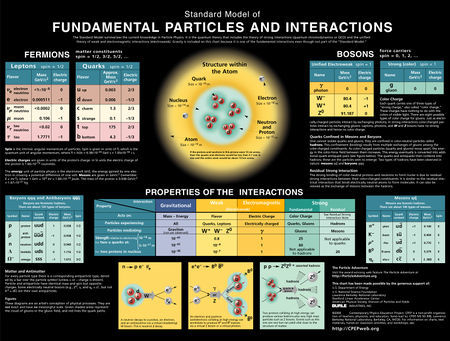
http://www.quick-facts.co.uk/science/particles.html
https://en.wikipedia.org/wiki/List_of_particles http://abyss.uoregon.edu/~js/ast123/lectures/lec07.html
